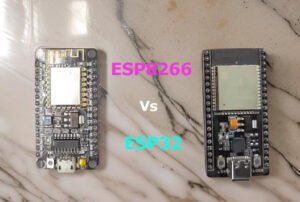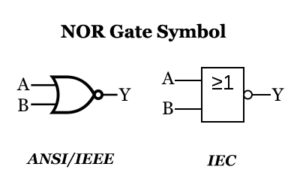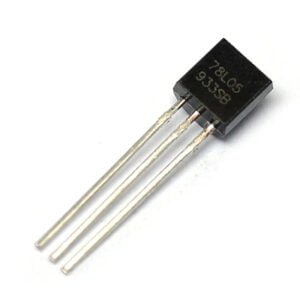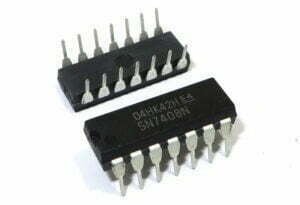The SN74HC595N is a versatile shift register used in digital electronics. It is a key component for expanding output capabilities in microcontroller projects.
This device is popular among hobbyists and engineers for its simplicity and effectiveness. It allows for serial-to-parallel data conversion, making it essential in many applications.
This shift register is compatible with most microcontrollers, including Arduino and Raspberry Pi. Its ability to daisy-chain makes it ideal for scalable designs.
In this guide, we will explore the SN74HC595N’s features, applications, and how to use it effectively. Whether you’re a beginner or an experienced engineer, this article will enhance your understanding of this essential component.
What is the SN74HC595N Shift Register?
The SN74HC595N is an 8-bit serial-in, parallel-out shift register. It is a member of the 74HC series, known for high-speed CMOS logic. This device is essential for converting serial data to parallel data in digital systems.
With a simple architecture, the SN74HC595N houses a shift register and a storage register. Data is first shifted bit by bit through the shift register before being transferred to the storage register. This setup allows for effective data latching and output management.
The SN74HC595N’s design includes 16 pins, utilized for data input and control purposes. Some key pins include:
- DS (Data Input): Receives serial data.
- SH_CP (Shift Register Clock Input): Shifts data on rising edge.
- ST_CP (Storage Register Clock Input): Moves data to output stage.
- OE (Output Enable): Activates outputs when held low.
This shift register also supports cascading, enabling extended outputs. By connecting the serial output (Q7′) of one to the data input of another, multiple SN74HC595N devices can be chained together. This feature is invaluable for expanding the number of outputs needed in complex digital projects.
Key Features and Electrical Characteristics
The SN74HC595N is known for its essential features. It is an 8-bit serial-in, parallel-out shift register. It converts serial data inputs into parallel outputs efficiently.
A standout feature is its wide operating voltage range. The SN74HC595N functions well between 2V and 6V. This range makes it versatile for various digital circuit applications.
Another critical characteristic is its low power consumption. This attribute is beneficial for battery-powered projects. The shift register also supports high-speed operations due to its CMOS logic design.
Here are some key electrical characteristics:
- Operating Voltage: 2V to 6V
- Maximum Output Current: 20mA per pin
- Input Capacitance: 3.5pF
- Supply Current: Typically 80μA
SN74HC595N Pinout and Functions
The SN74HC595N has 16 pins, each serving unique purposes essential for its operation. Understanding these pins is critical for using the shift register effectively.
- Pin 1 (Q1) to Pin 7 (Q7): These are the output pins for the parallel data.
- Pin 8 (GND): Ground pin, connecting to the circuit’s common ground.
The device also features a data pin and clock pins:
- Pin 9 (Q7’): Serial data output for cascading additional shift registers.
- Pin 10 (MR): Master reset pin, clears the shift register if held low.
Another crucial pin setup is the control of data flow and latching:
- Pin 11 (SH_CP): Shifts data bits on the rising clock edge.
- Pin 12 (ST_CP): Transfers shifted data to output on the next clock pulse.

The data input and output activation are managed through these pins:
- Pin 13 (OE): Controls the activation of outputs; active low.
- Pin 14 (DS): The input pin for serial data.
For successful integration into projects, power must also be accounted for:
- Pin 15 (Q0): Another parallel data output pin.
- Pin 16 (VCC): Supplies power to the shift register circuit.
Here’s a recap of important pin functions:
- Data Management: DS, SH_CP, and ST_CP.
- Parallel Outputs: Q0 to Q7 pins.
- Power and Controls: VCC, GND, OE, and MR pins.
Effective use of these pins is vital for extending outputs and interfacing with microcontrollers. Designers often toggle data and clock lines to streamline communication between the SN74HC595N and other components.
How the SN74HC595N Works: Serial-In, Parallel-Out Explained
The SN74HC595N shift register is a versatile component for converting serial data into parallel outputs. It simplifies the control of multiple devices using a few microcontroller pins.
Data enters the SN74HC595N serially through the DS pin. This method is efficient in conserving pin usage on microcontrollers. Each bit fed into the data pin advances on every clock pulse, managed by the SH_CP pin.
Upon completion of data entry, the ST_CP pin activates. It transfers the serial data from the shift register to the storage register, making it available on the output pins. Here’s a quick rundown of the process:
- Serial Data Input: Comes through the DS pin.
- Data Shifting: Controlled by the SH_CP pin.
- Data Latching: Managed by the ST_CP pin.

Using the SN74HC595N with LEDs: Pinout and Example Circuit
Connecting LEDs to the SN74HC595N is a common application. This setup allows you to control multiple LEDs with minimal pins. The shift register acts as an intermediary between microcontroller pins and LED outputs.
Begin by understanding the pinout specific to LED control. The SN74HC595N has 16 pins. Knowing their function is vital:
- Q0-Q7: Outputs connected to LEDs.
- DS: Serial data input from the microcontroller.
- SH_CP: Clock pin for data shifting.
- ST_CP: Latch pin for transferring data to outputs.
To create a basic LED circuit, connect each LED to the respective output pins (Q0 to Q7). Include a current limiting resistor with each LED to prevent excess current flow.
Here’s an example setup for controlling LEDs:
- Connect DS to your microcontroller’s data pin.
- Link SH_CP and ST_CP to clock and latch pins on your microcontroller.
- Attach LEDs to Q0-Q7 with resistors in series.
Understanding the configuration ensures reliable LED operation. Current limiting resistors are crucial to protect the LEDs from high currents.

Software control is also essential. Send data sequences corresponding to the desired LED states (on/off) from the microcontroller. This data shifts through the SN74HC595N, reflecting the state change in LEDs.
In practice, this setup lets you control 8 LEDs with just a few microcontroller pins. It’s an elegant solution for expanding the functional output of your projects.
Implementing the SN74HC595N with LEDs demonstrates the practical application of shift registers. It highlights both efficiency and creativity in digital design.
Interfacing the SN74HC595N with Microcontrollers
Interfacing the SN74HC595N shift register with microcontrollers opens up many possibilities. It allows efficient communication between simple output devices and complex controllers. The process involves a few key connections but yields significant control over digital outputs.
Begin by connecting three main pins: DS (data pin), SH_CP (clock pin), and ST_CP (latch pin). These are essential for the data transmission from the microcontroller to the shift register. The OE (output enable) pin can be connected to ground to keep it enabled.
Most microcontrollers, like Arduino or Raspberry Pi, support serial communication. Here are steps to interface the SN74HC595N with any microcontroller:
- Connect DS: Link to a digital output pin.
- Link SH_CP and ST_CP: Attach to other digital pins for clock and latch.
- Ground the OE pin: To enable outputs continuously.
Communication involves sending a data stream from the microcontroller. This serial data updates the shift register. Each bit of data transmitted results in a shift operation, populating the internal register one bit at a time.
Once data is shifted in, toggling the latch pin updates all the outputs simultaneously. This ensures a smooth transition of states on each output pin. It demonstrates efficient use of pins, especially in pin-limited microcontroller environments.
By using the SN74HC595N with microcontrollers, digital projects become more compact and flexible. It allows for the development of complex systems without the need for excessive resources, leveraging the strengths of both the shift register and microcontroller.
Cascading Multiple SN74HC595N Shift Registers
To increase outputs, you can cascade multiple SN74HC595N shift registers. Cascading means connecting several shift registers in series. This is useful when many outputs are needed in digital projects.
The process involves connecting the Q7’ (serial out) pin of one register to the DS (data in) pin of the next. This configuration allows the serial data to flow through each register in the chain. All shift registers in the cascade use the same clock and latch signals.
Here’s a simple step-by-step to cascade:
- Connect Q7’ to DS: Continue the data line to the next register.
- Share Clock and Latch Pins: Join the same SH_CP and ST_CP pins across registers.
- Output Enable (OE) Pin: Keep grounded to activate all outputs.
This arrangement grows the number of controlled outputs considerably. If you connect two SN74HC595Ns, you handle 16 outputs using only a few microcontroller pins. This scalability feature is vital in expansive display boards or industrial control panels. It illustrates the efficiency and flexibility inherent in the SN74HC595N design, making it a popular choice for engineers and hobbyists alike.
Common Applications of the SN74HC595N
Key applications of SN74HC595N include:
- LED Matrices
- 7-Segment Displays
- Multiplexed Displays
- Education and Prototyping Projects
Conclusion
The SN74HC595N shift register is a vital tool in digital electronics. Its role in expanding output capabilities makes it indispensable. Understanding its functions can significantly enhance your circuit design skills.






